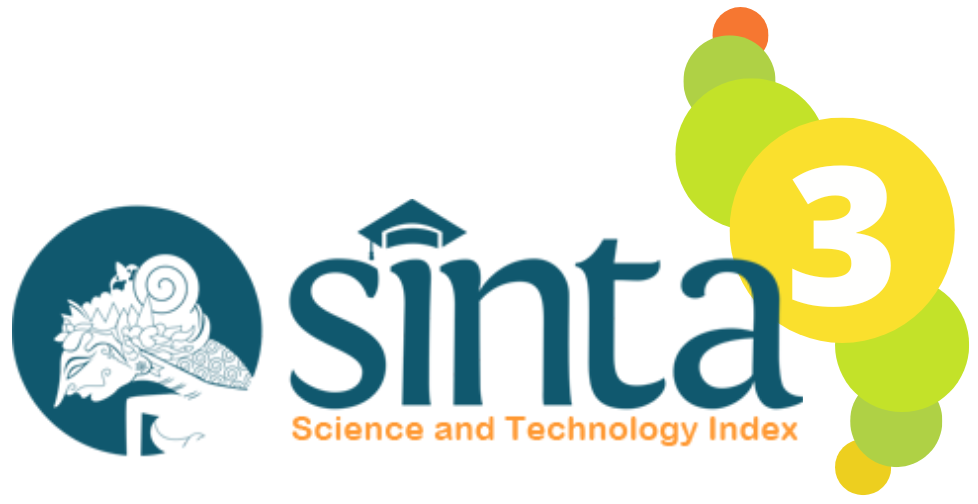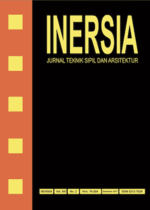ANALISIS PERKUATAN LENTUR BALOK KAYU SENGON DENGAN SISTEM KOMPOSIT BALOK SANDWICH (LAMINA DAN PLATE)
DOI:
https://doi.org/10.21831/inersia.v13i2.17176Abstract
ABSTRACTThe using of wood beam for structural purposes are still wood-oriented of good type and quality. Along with the increasing use of wood in the field of construction, the availability of large size wood and good quality becomes more limited. Moving from previous research on weak wood composite, an idea was made to analyze the strength of bending of logs from weak wood through composite engineering. Sengon wood is weak wood with compretion strength 16,91 MPa, tensile strength 46,33 MPa, shear strength 3.51 MPa, flexural strength 23,52 MPa, MOE 4210,99 MPa and classification of E6. Component press lamina keruing with compretion strength 47,58 MPa. Component tesile plate steel with tensile strength 267,28 MPa. The maximum load of intact sengon beam (BSU) 8.04 kN while the composite laminated beam (BLK) of maximum load of 16.82 kN increased 109%. The flexural elasticity module of BSU 7.002,62 Mpa while the BLK of 10,419 MPa increased 49%. Flexural strength BSU 20.65 MPa while at 39.72 MPa BLK increased 92%. BSU rigidity at 6.4 kN proportional load is 153,02 while at BLK 325,06 it increases 112,43%. The curvature of BSU -77.42 at maximum load of 8.04 kN whereas in BLK is -24.03 increased 69%. The efficiency structure of the BSU is 1.07 and in the BLK 1.24 is increased by 15.89%. The pattern of BSU failure is brittle on linear loading with disconnected fibers. While BLK sengon damage does not cause the beam collapsed because it is still held steel plate and lamina keruing. The analysis for live load is 350 Kg / m2, then the maximum load is 10.5 kN. At BLK able to withstand the maximum load of 16.82 kN, the concept of this laminated composite beam can be used as a structural beam.
Keywords: sengon, beams, composites, structural beams.
AbstrakPenggunaan balok kayu untuk keperluan struktur masih berorientasi pada kayu dari jenis dan mutu yang bagus. Seiring dengan makin banyaknya penggunaan kayu dalam bidang konstruksi maka ketersediaan kayu ukuran besar dan bermutu baik menjadi semakin terbatas.Beranjak dari riset-riset terdahulu tentang perkuatan kayu lemah, dibuatlah gagasan untuk menganalisis kekuatan lentur balok dari kayu lemah melalui rekayasa komposit.Kayu sengon merupakan kayu lemah dengankuat tekan 16,91 MPa, kuat tarik 46,33 MPa, kuat geser 3,51 MPa, kuat lentur 23,52 MPa, MOE 4210,99 MPa dan termasuk klasifikasi E6. Komponen tekan lamina keruing dengan kuat tekan 47,58 Mpa. Komponen tarik steel plate dengan kuat tarik 267,28 Mpa. Beban maksimum balok sengon utuh (BSU) 8,04 kN sedangkan balok laminasi komposit (BLK) beban maksimum16,82 kN meningkat 109%.Modulus elastisitas lentur BSU 7.002,62 MPa sedangkan BLK sebesar 10.419 Mpa meningkat 49%. Kuat lentur BSU 20,65 MPa sedangkan pada BLK 39,72 Mpa meningkat 92%.Kekakuan BSU pada beban proporsional 6,4 kN adalah 153,02 sedangkan pada BLK 325,06 meningkat 112,43%.Kelengkungan BSU -77,42 pada beban maksimum 8,04 kN sedangkan pada BLK adalah -24,03 meningkat 69%.Efisiensi struktur BSU sebesar 1,07 dan pada BLK didapatkan 1,24 meningkat 15,89%.Pola kegagalan BSU bersifat getas pada pembebanan linear dengan serat terputus. SedangkanBLK kerusakan sengon tidak menyebabkan balok runtuh karena masih ditahan steel plate dan lamina keruing. Analisis untuk beban hidup 350 Kg/m2, maka beban maksimum adalah 10,5 kN. Pada BLK mampu menahan beban maksimum 16,82 kN, maka konsep balok laminasi komposit ini dapat digunakan sebagai balok struktural.
Kata kunci: sengon, balok, komposit, balok struktural.Downloads
Published
How to Cite
Issue
Section
License
Authors who publish with INERSIA journal agree to the following terms:
- Authors retain copyright and grant the INERSIA journal right of first publication with the work simultaneously licensed under Creative Commons Attribution License (CC BY 4.0) that allows others to share the work with an acknowledgment of the work's authorship and initial publication in this journal.
- Authors can enter into separate, additional contractual arrangements for the non-exclusive distribution of the published version of the work (e.g., post it to an institutional repository or edit it in a book), with an acknowledgment of its initial publication in this journal.
- Authors are permitted and encouraged to post their work online (e.g., in institutional repositories or on their website) before and during the submission process, as it can lead to productive exchanges, as well as earlier and greater citation of published work.

INERSIA by https://journal.uny.ac.id/index.php/inersia was distributed under a Creative Commons Attribution 4.0 International License







